Explore the Malaga Port in the Costa del Sol
We explore the Malaga Port area for fun shopping, cool restaurant and shopping venues, scenic harbor and beach views along with exploring the fun gardens, promenades, museums and other historic gems to visit in the area. This quick guide details all the fantastic things you can do and see around the port area or an easy walk to the historic sites of the city.
Originally a dilapidated harbor area Malaga Port has been retrofitted to be a vital trading hub, cruise port, shopping and dining venue and a fun place to hang out in the harbor area of Malaga city. With it’s historical presence that dates back to Phoenicians and Roman period, . today, this bustling port remains a vital trading hub, bustling with activity and providing a glimpse into the city’s vibrant past and promising future.
The port area of Malaga offers not only a gateway to the sea but also a gateway to a treasure trove of sights, sounds, and flavors. Whether you’re a history enthusiast, a lover of breathtaking views, or a culinary adventurer, Malaga Port beckons with its irresistible charm, promising an enriching journey like no other. Come, embark on a voyage of discovery and delight, as you explore the enchanting world of Malaga Port.
Visit to Malaga Port: An Incredible Experience with nearby attractions, food venues, shopping and beautiful places to explore in the area
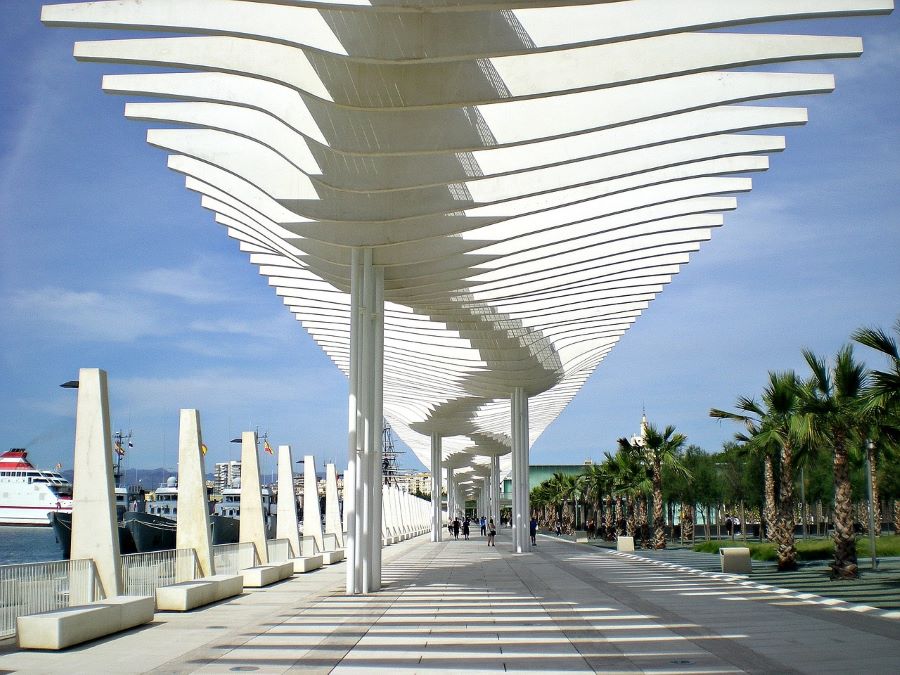
Why visit the Malaga Port area?
Here are some cool reasons to explore the Malaga Port area now:
Historical Significance: The port has a rich history dating back to Phoenician and Roman times. Exploring the remnants of ancient civilizations and Roman sea factories can provide a fascinating insight into the area’s past.
Cultural Heritage: As a major Moorish city and port during the medieval period, Malaga offers a unique blend of Moorish and Spanish influences. Visitors can appreciate the architectural wonders and cultural heritage left by these diverse civilizations.
Maritime Atmosphere: The port’s maritime ambiance provides a captivating setting for leisurely walks, strolls along the waterfront, and watching boats sail in and out of the harbor. The sound of seagulls and the sea breeze add to the overall experience. There’s actually a lot to see, nice shopping and dining and views to enjoy here.
Trade and Commerce: The port remains an active trading hub, allowing visitors to witness the movement of goods and experience the vibrant atmosphere of a working port.
Cruise Ship Gateway: Being unusually close to the city center is advantageous for cruise ship passengers. It offers easy access to Málaga’s attractions and ensures a convenient and memorable visit for travelers arriving by sea.
Recreational Activities: The port area has been evolving with leisure complexes and recreational spaces. Tourists and locals can enjoy various activities, including shopping, dining, and entertainment.
Spectacular Views: The port area boasts stunning vistas of the sea, making it an ideal spot to capture breathtaking sunsets or to simply relax and enjoy the picturesque scenery.
Gastronomy: Visitors can savor delicious seafood dishes and regional cuisine at the port’s numerous restaurants and tapas bars, offering a taste of authentic Spanish flavors.
Nearby Attractions: The port’s strategic location makes it a perfect base for exploring Malaga’s other attractions, such as museums, historic landmarks, beautiful beaches, and the famous Alcazaba fortress.
City Revitalization: The efforts to rebuild and revitalize the port area have resulted in a thriving urban landscape with a vibrant mix of modernity and history, offering an appealing destination for tourists from all walks of life.
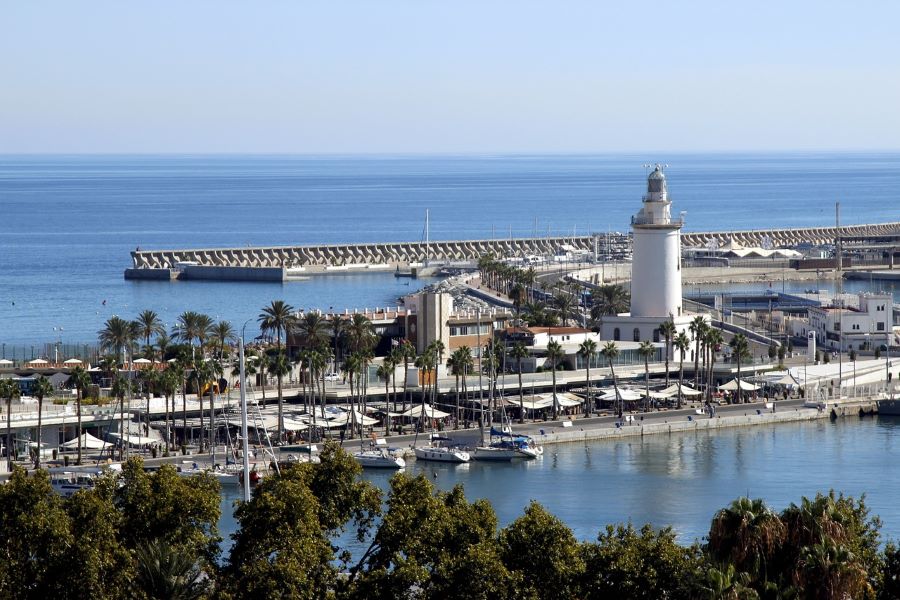
A brief History about Malaga Port
The port’s origins trace back to 1000 B.C. when it was founded by the Phoenicians. During the Roman rule, Málaga thrived as a bustling trading port, exporting iron, copper, and lead from nearby Ronda’s mines. Additionally, they traded olive oil, wine, and garum, a pickled fish relish. Today, you can still see the Garum storage vats of a Roman sea factory at the University offices on Paseo del Parque.
In 711 A.D., the Moors invaded, transforming Málaga into a significant Moorish city and port, serving as Granada’s primary port as well. It gained fame for its export of figs and wine. During the Habsburg Empire, Málaga became one of Europe’s largest manufacturing ports. Subsequent developments included the construction of the East Dock and New Quay in 1720, followed by the building of the first lighthouse in 1814. In 1910, the port got its first passenger terminal, and in 1920, the Málaga Puertollano pipeline was constructed to enable direct olive oil exports from the port. However, this pipeline ceased operation in 1990.
The port faced a decline under the Franco regime, as the city of Málaga, being outwardly republican, suffered mass execution and repression by the Nationalists. Franco believed that Spain’s true economic success lay in the northern manufacturing industry, so he neglected Málaga port, considering it of little value. However, in recent years, the city and port authority have been working tirelessly to rebuild the port’s reputation and boost its economic value. The port’s unique advantage lies in its close proximity to the city center, making it an appealing factor for cruise ship passengers. Furthermore, over the past decade, the port authority has ceded land to the city, leading to the opening of leisure complexes.
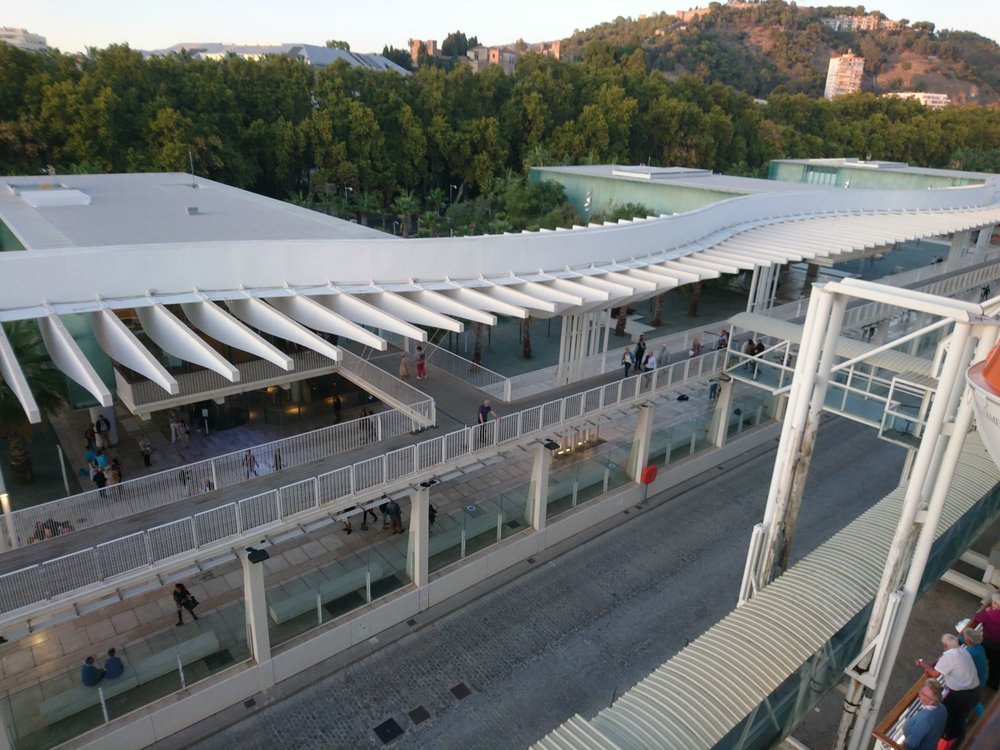
Top things to see around the Malaga Port area
Around the Malaga Port area, you’ll find an abundance of fun and interesting attractions to visit. Here are the top things to see and do:
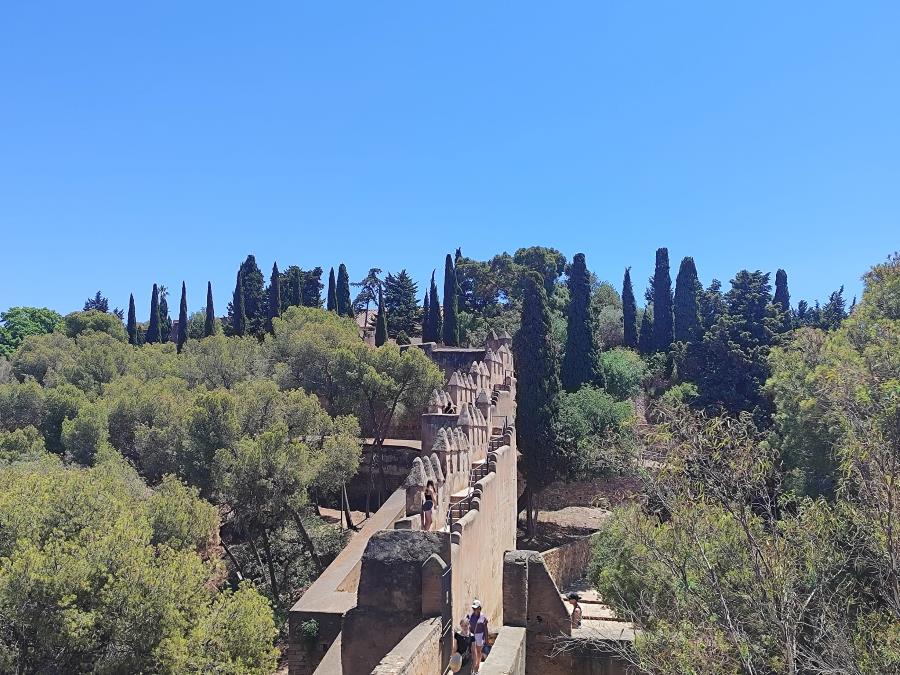
Malaga Alcazaba
A stunning Moorish fortress overlooking the port, the Alcazaba offers a glimpse into the city’s rich history. Wander through its ancient walls, beautiful gardens, and enjoy panoramic views of the port and the city. You can walk, take public transportation or a quick taxi/uber ride to get to the entrance and discover the historic site, views and fascinating Moorish architecture and influence of the area.
Check out my post to visiting the Alcazaba here for more information and details.
Here’s a video tour of the Malaga Alcazaba, stunning views, ruins and ramparts below
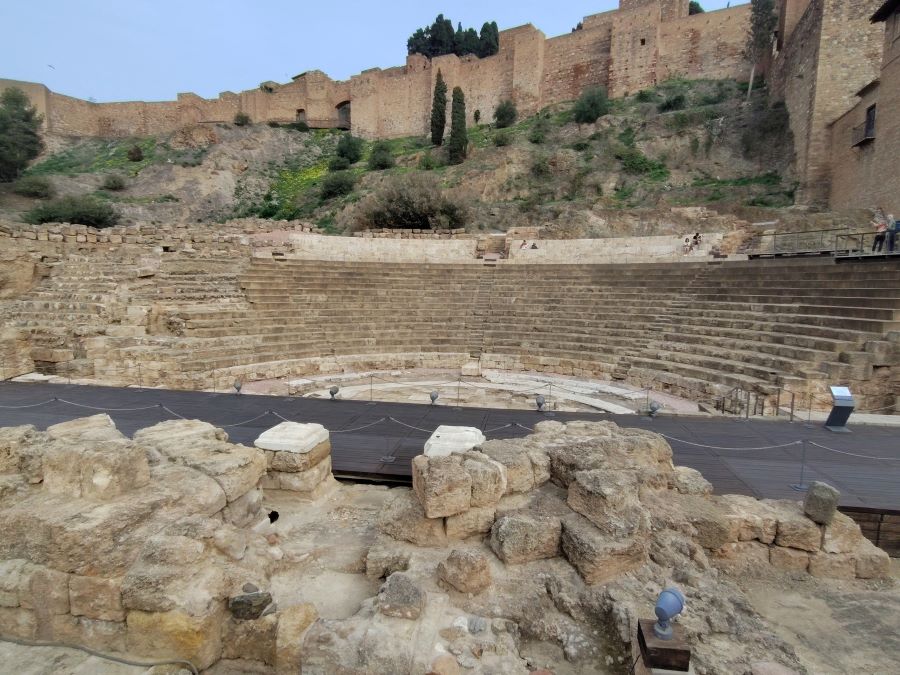
Roman Theatre
Adjacent to the Alcazaba and located at the base, the Roman Theatre is a well-preserved archaeological site showcasing the remnants of a 1st-century BC Roman amphitheater. It’s a fantastic site to explore the ancient Roman city of Malaga called Flavia Malacita. Once you’re done with this site, it’s easy enough to explore the Old Town of Malaga
Check out Malaga Roman Theatre website here for more information.
Here’s a quick video tour of the Roman Theatre in Malaga highlights and places to explore below:
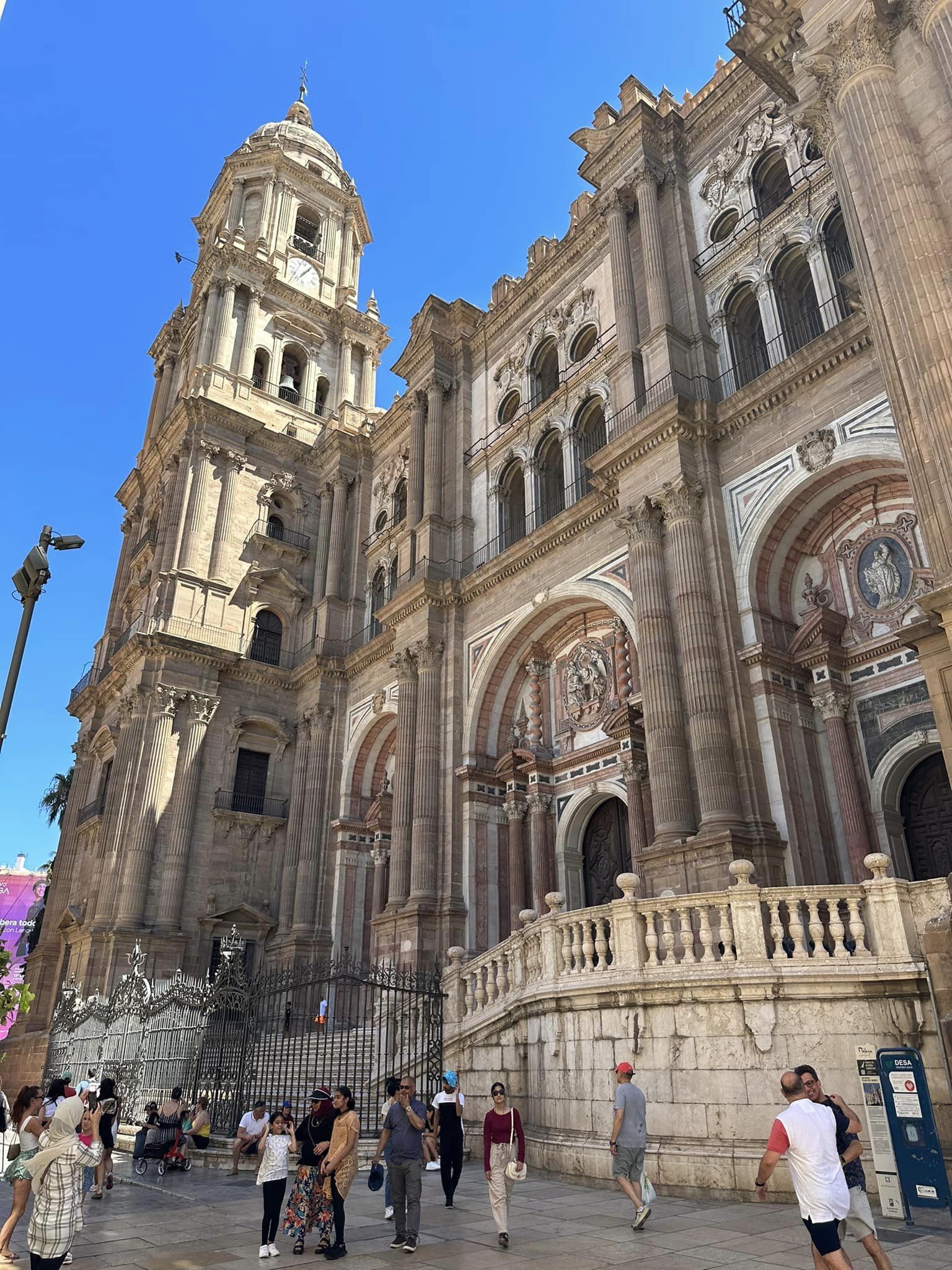
Malaga Cathedral
Known as “La Manquita” (the one-armed lady) due to its unfinished south tower, the cathedral is an iconic landmark with a mix of Renaissance, Baroque, and Gothic architecture. The interiors and chapels are ornate and stunning to witness inside and worth a visit.
Check out my post to visiting Malaga Cathedral here for more information and details.
Here’s a video tour of both stunning interiors and exterior details and architectural design of the Malaga Cathedral below
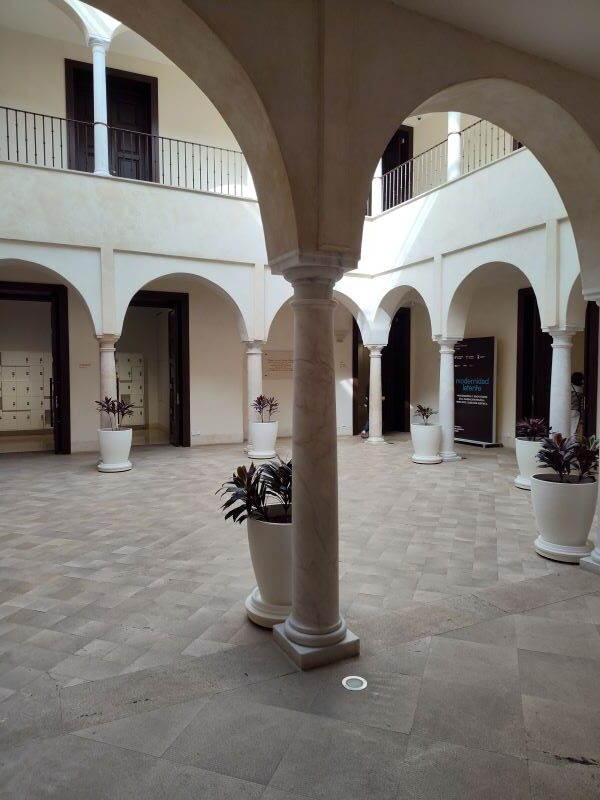
Picasso Museum
Celebrating the life and works of the renowned artist Pablo Picasso, this museum houses a remarkable collection of his paintings, drawings, and sculptures.
The Museo Picasso Málaga, opened in 2003, is housed in a gorgeous 16th-century Buenavista Palace. The building is a blend of Renaissance and Mudéjar architecture with a beautiful interior courtyard. Located in Picasso’s birthplace, the museum fulfills his wish for his art to be showcased in his hometown. Its collection, enriched by donations from Picasso’s family, spans nearly 80 years of his work, including paintings, sculptures, ceramics, and drawings. The museum offers insights into his artistic evolution, from early studies to Cubism and his later reinterpretations of classical themes. Beyond the permanent collection, it hosts temporary exhibitions and educational programs, contributing to Málaga’s vibrant cultural scene.
Check out the Picasso Museum website here for more details to visiting.
Here’s a tour of the Picasso Museum in central Malaga and spanning a broad spectrum of transformative periods
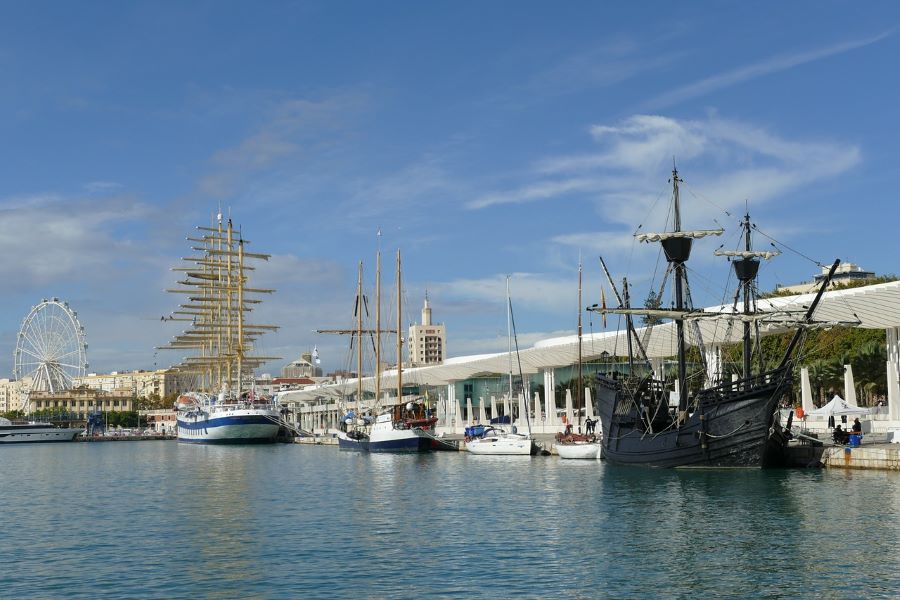
Muelle Uno
Muelle Uno is a lively waterfront promenade in Málaga that blends the city’s maritime heritage with modern leisure. Stretching along the harbor, it offers a mix of shops, restaurants, and cultural venues. Visitors can enjoy Mediterranean views, dine at many traditional to modern styled eateries—including the Michelin-starred José Carlos García Restaurant—and explore the Centre Pompidou Málaga, the first of its kind outside France. The area also hosts events like live music, markets, and art exhibitions, making it a dynamic spot for both locals and tourists. With its scenic setting and diverse offerings, Muelle Uno provides a unique experience by the sea.
Check out the Muelle Uno website here for more details.
What to see at the Muelle Uno along the waterfront? Check out this video tour of shops, restaurants and the harbor area
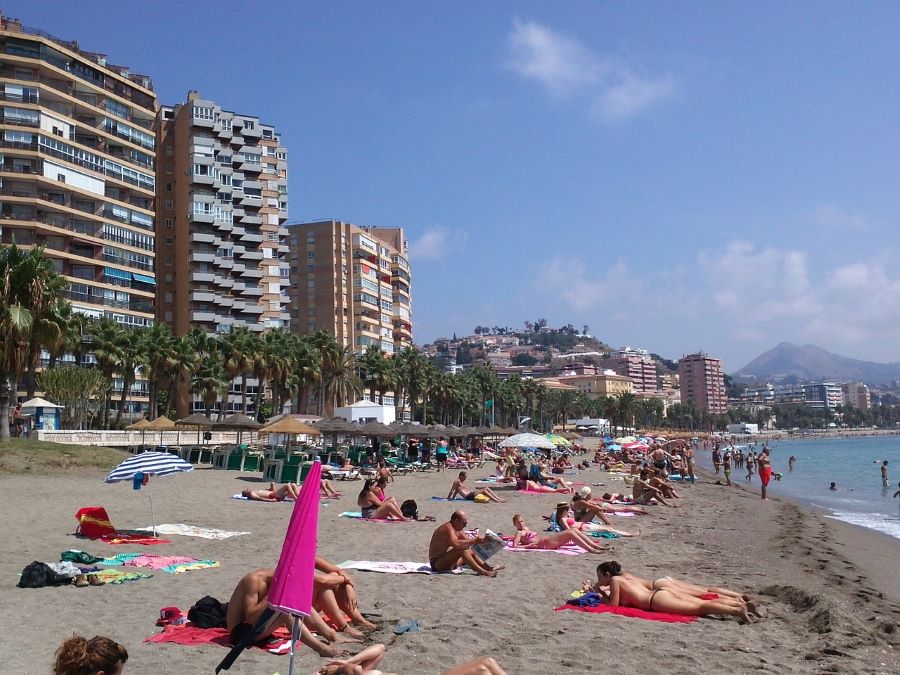
Malagueta Beach
Just a short walk from the port, this beautiful urban beach is a perfect spot to relax, sunbathe, or take a refreshing swim in the Mediterranean waters. The beach areas are well maintained with a full set of amenities including showers, restrooms, lifeguards, water accessory rentals and cabanas and eateries on the beach areas.
You can catch a taxi, take public transportation or even walk to the beach and enjoy the walking promenades on the beach area.
Check out the popular Malagueta Beach in Malaga’s coastline in this walking tour below
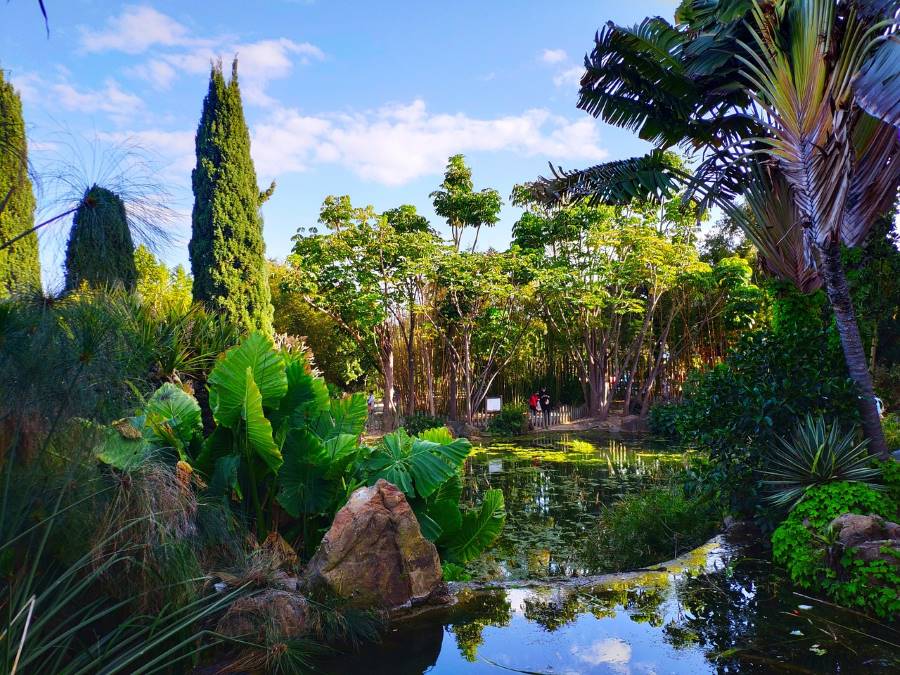
Paseo del Parque
A charming park that runs along the port’s eastern edge, offering green spaces, fountains, and tropical vegetation—a peaceful oasis in the heart of the city. This is a lush and mature garden area to enjoy and find some green areas that are fun to explore and enjoy these beautiful garden spaces that you can enjoy in the middle of this urban city area.
If you love lush tropical gardens, you should check out the Paseo del Park along the waterfront area. Here’s a video walking tour with highlights below.
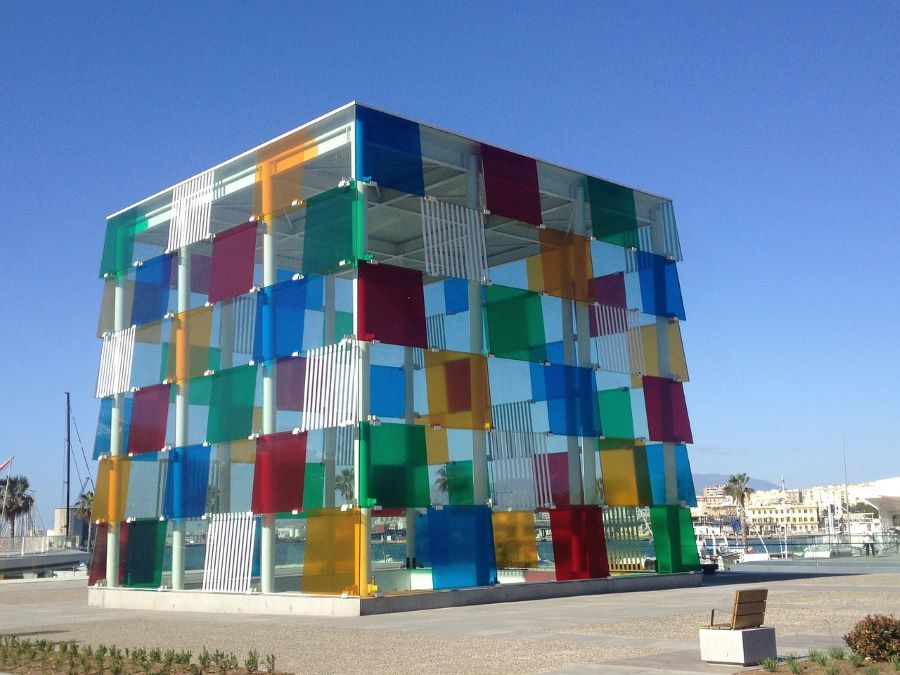
Centre Pompidou Malaga
This contemporary art museum, an offshoot of the famous Paris Museum, houses an impressive collection of modern artworks and hosts various temporary exhibitions. The colorful and modern architecture in the heart of the harbor area and worth a visit to visit the exteriors and check out the art exhibits inside.
Check out the Centre Pompidou website here for more details and information.
Here’s a video tour of the galleries at the Centre Pompidou Malaga below
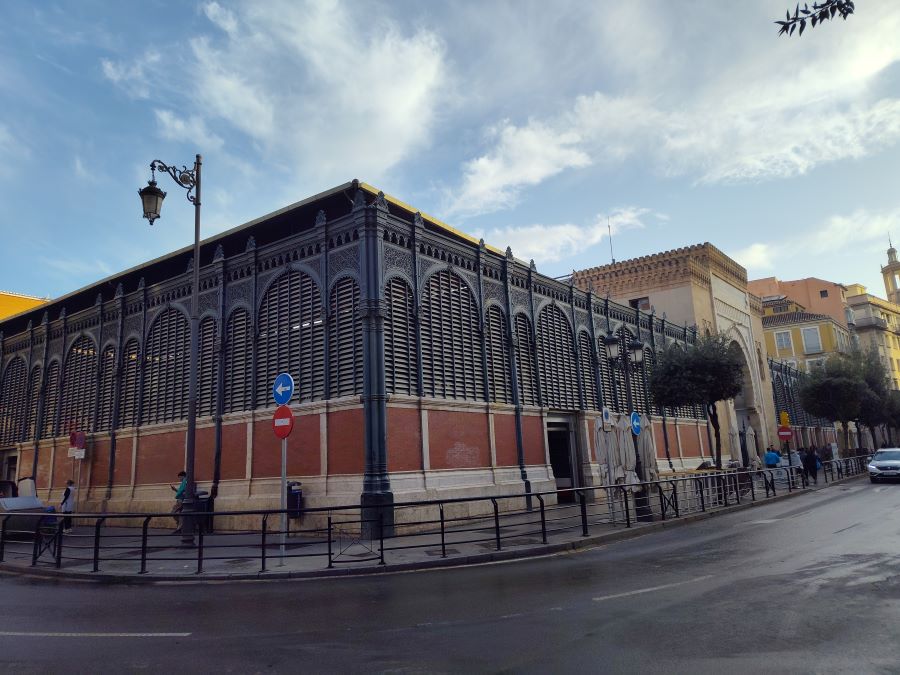
Atarazanas Market
A lively and colorful market where you can immerse yourself in the local culture and find fresh produce, seafood, and artisanal goods and enjoy what’s fresh and regional. There are several eateries around the Atarzanas Market if you want to try out some regional and specialty dishes from the area.
Check out what’s happening at Ataranzanas Market here for more details.
Here’s a wonderful video tour of the Ataranzanas market in Malaga, the central market below
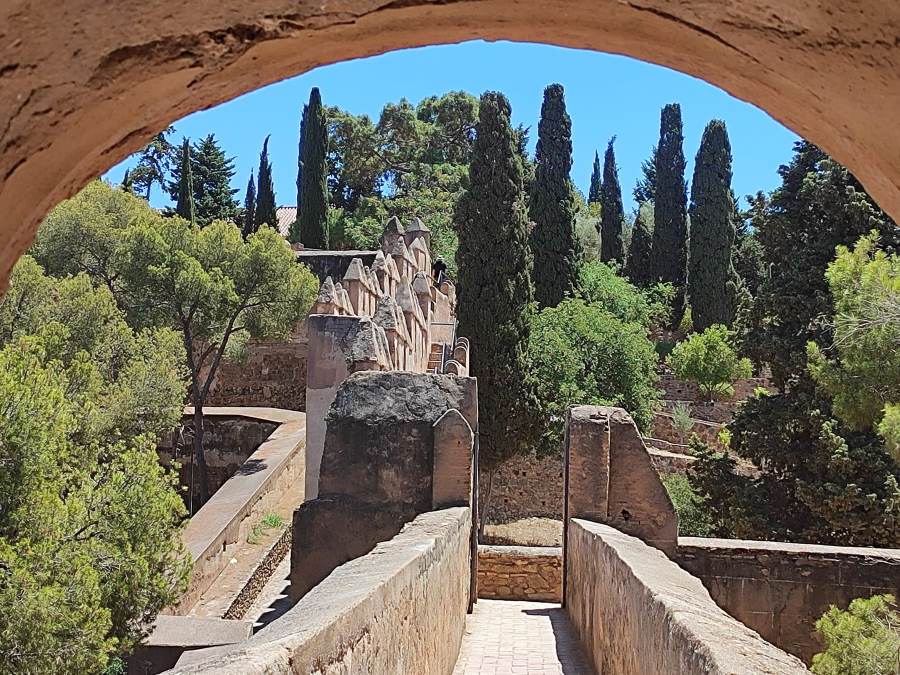
Gibralfaro Castle
Located on the hill above the Alcazaba, this castle offers panoramic views of Malaga and the port. It’s an excellent spot to watch the sunset. It’s a fantastic place to walk, explore the ancient site and learn a little about the Moorish influence of the area.
Check out my post to visiting Gibralfaro Castle here for more details and information.
Here’s a quick video tour of the castle grounds, ramparts and spectacular views at the Gibralfaro Castle below
Other nearby attractions
Malaga Ferris Wheel: Situated at the entrance of Muelle Uno, this giant Ferris wheel, known as “Mirador Princess,” provides stunning views of the port and the city.
Malaga Maritime Museum: Learn about the city’s maritime history through a diverse collection of nautical artifacts, models, and exhibits.
Bullfight ring and Museum: Located close to the harbor area and easy commute the impressive bullring is impressive and visiting the museum here will give you insight to this this cultural aspect and history of this sport and rituals in the city.
From historic landmarks to modern attractions, the Malaga Port area promises an enriching and diverse experience that will leave you with cherished memories of this vibrant and culturally rich Mediterranean gem.
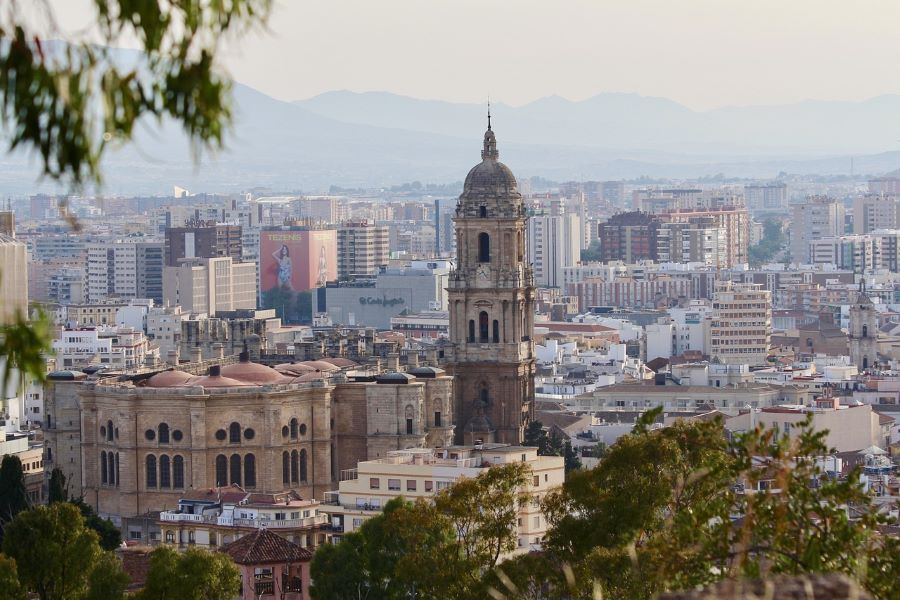
Further reading – places to explore around Malaga City
If you plan on visiting and exploring more of Malaga City, check out these other posts to visiting this magnificent city.
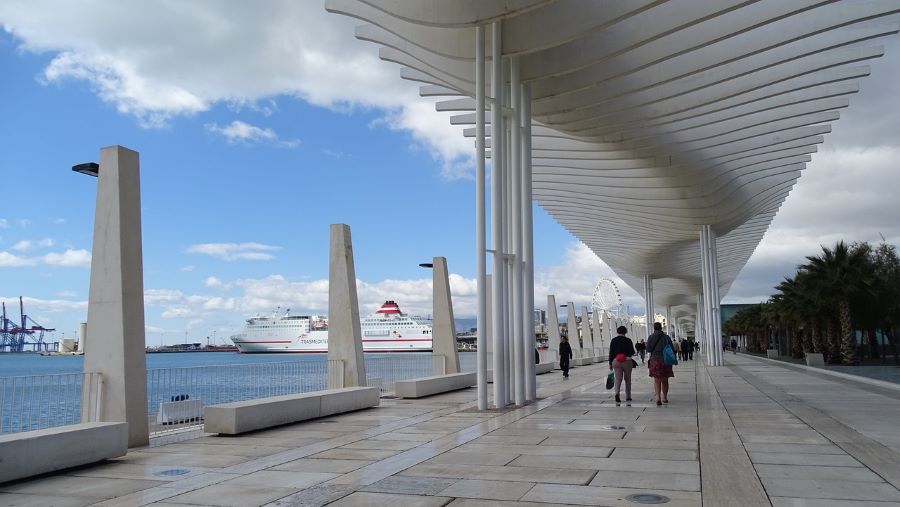
Conclusion to visiting the Malaga Port area
A visit to Malaga Port proved to be an incredible and fun experience while exploring Malaga city. The bustling atmosphere, rich maritime history, and picturesque waterfront views left a lasting impression on him. The seamless operations and delectable seafood at the waterfront restaurants were among the highlights of his trip. Undoubtedly, Malaga Port’s blend of tradition and modernity made it a must-visit destination for anyone seeking a captivating experience.
Thanks for checking out this post on Visit Spain and Mediterranean, we hope to inspire you to explore the country through our lens and posts.
Happy Travels!
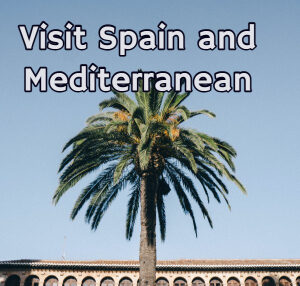
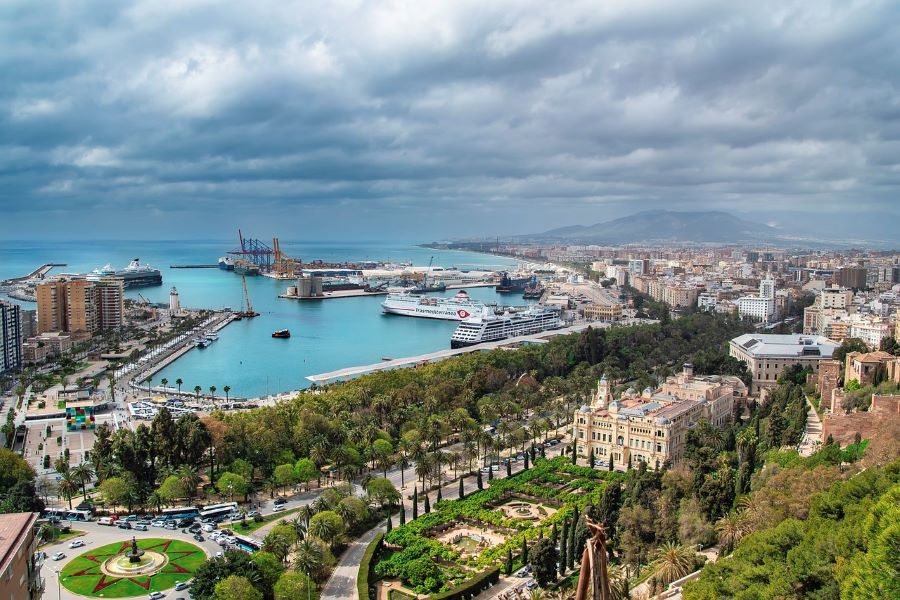
7 thoughts on “Visit to Malaga Port”